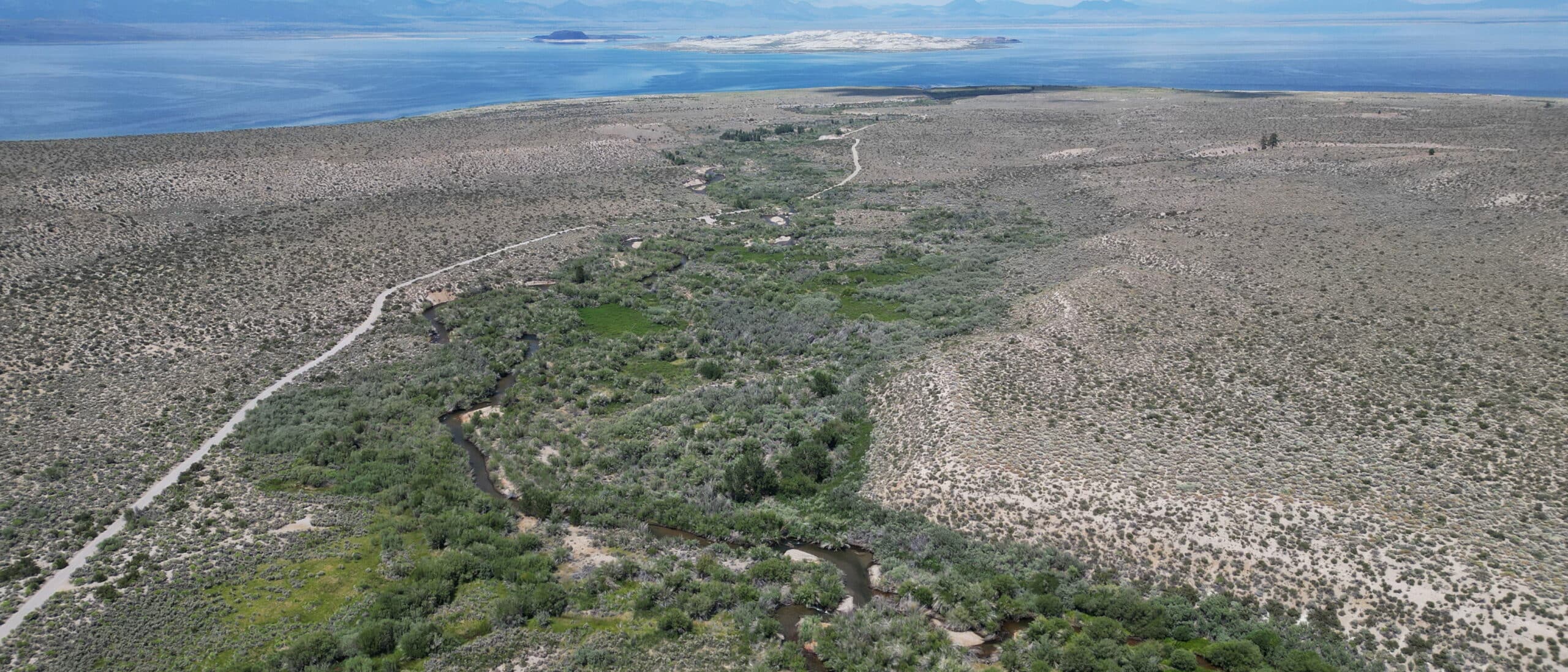
Thank you, letter writers!
Thank you to the Mono Lake Committee members and supporters who sent many hundreds of letters to the State Water Board spotlighting DWP’s short-sighted plan. DWP ended up withdrawing its flow waiver request because of the pressure you generated asking the Board to ensure that Rush Creek’s restoration isn’t set back.
On April 15, the Los Angeles Department of Water & Power (DWP) requested permission to waive Rush Creek spring high flow requirements, sparking concern across the state. Hundreds of comment letters called for DWP to do better to ensure that Rush Creek recovery is not set back by DWP’s own failing infrastructure.
Thank you to the Mono Lake Committee members and supporters who sent many hundreds of letters to the State Water Board spotlighting DWP’s short-sighted plan. DWP ended up withdrawing its flow waiver request because of the pressure you generated asking the Board to ensure that Rush Creek’s restoration isn’t set back.
The public attention had a big impact. Three weeks later, and just 24 hours ahead of the close of the public comment period, DWP withdrew its request.
Strong support for Rush Creek & Mono Lake
Mono Lake supporters spoke up, sending hundreds of letters to the California State Water Resources Control Board. Eloquently written personal stories illustrated strong, ongoing concern about the damage done in the Mono Basin by excessive DWP water diversions, and support for the State Water Board’s restoration program. Many pointed out that Rush Creek restoration shouldn’t be interrupted just because DWP has run its aqueduct infrastructure to the point of failure.
The public concern underscored the overarching problem with DWP’s request: DWP asked for authorization to reduce restoration flows without offering to mitigate impacts or overcome its malfunctioning equipment limitations.
In a lengthy comment letter, Mono Lake Committee attorneys highlighted that DWP has a responsibility to take additional steps to ensure its failing valve problems do not impair restoration, writing “the [State Water] Board should not reward DWP’s lack of diligence and poor stewardship of Rush Creek by giving it a free pass” with a flow waiver. The letter set forth eight major mitigation measures that DWP should undertake, including the Committee’s detailed proposal to achieve annual restoration flows with proactive management of Grant Lake Reservoir.
Detailed letters from the California Department of Fish & Wildlife and California Trout also argued that restoration responsibilities must be met and that there must be requirements established that mitigate the ecological impacts of DWP’s failing rotovalve.
More requests for free passes to come
The Committee is confident DWP could have managed its reservoir to deliver springtime high flows via the spillway, had DWP not exported so much water last year. Notably, the amount exported exceeded the Los Angeles mayor’s 4,500 acre-foot voluntary commitment.
Looking ahead, DWP’s own repair plan shows that it will be unable to reliably deliver SEFs to Rush Creek until at least 2030. That means we can expect another flow waiver request—known as a Temporary Urgency Change Petition (TUCP)—in 2026 and subsequent years. In April 2025, the Committee proposed an interim reservoir management plan designed to maximize the potential for reservoir spill. This would mitigate the impairment of Stream Ecosystem Flows caused by the malfunctioning valve. DWP has plenty of time to implement proactive management strategies like this to demonstrate a commitment to Rush Creek restoration and fulfill its obligations, even while working on its rotovalve repairs.
DWP adds a twist
When DWP withdrew its TUCP, it added a twist to the operations plan for the year. DWP stated that it had revised its runoff forecast for the year, resulting in a drier forecast. The prediction of a drier year type eliminated the peak flow requirement for Rush Creek. And those lower flows can be met even with the reduced capacity of DWP’s malfunctioning rotovalve.
It seems convenient for DWP that it is solely responsible for forecasting the snowmelt runoff and thus holds the power to make such a revision. But indeed, that is how the process works. The question now, of course, is whether the forecast revision is valid.
In our watchdog role, Committee expert staff routinely do forecasting and cross-checking of DWP’s work. In the Committee’s evaluation, the effort DWP invested in its reforecasting “twist” is uncharacteristic—despite our advocacy for May updates, we’ve seen few significant May revisions in recent years. The revised forecast is plausible but uncertain, as it involves extrapolation from adjacent watersheds. We will be tracking the actual runoff this summer and throughout the year to see if DWP correctly forecasted what happens in the real world. Either way, the revised forecasting highlights the Committee’s longstanding call for DWP to deploy better, modern forecasting tools so that all parties have greater certainty about the Mono Basin snowpack and runoff.
More:
- Another delay for Rush Creek restoration – July 2024
- Notice of Petitions for Temporary Urgency Change for Licenses 10191 AND 10192 (Applications 8042 and 8043) of the City of Los Angeles Department of Water and Power
- Action alert: DWP seeks Rush Creek flow waiver, neglects restoration – May 2025
- Committee advances a solution to mitigate DWP’s infrastructure proglems – April 2025
- Broken Grant valve threatens restoration – article
This post was also published as an article in the Summer 2025 Mono Lake Newsletter. Top photo by Geoff McQuilkin.
